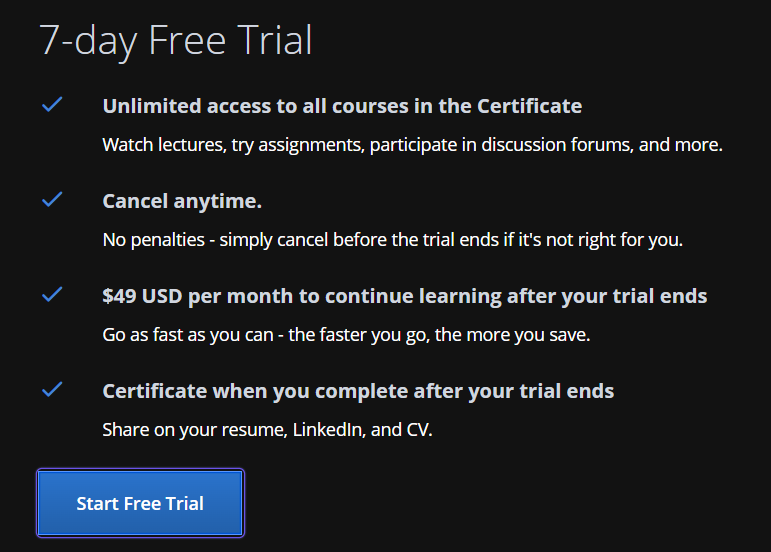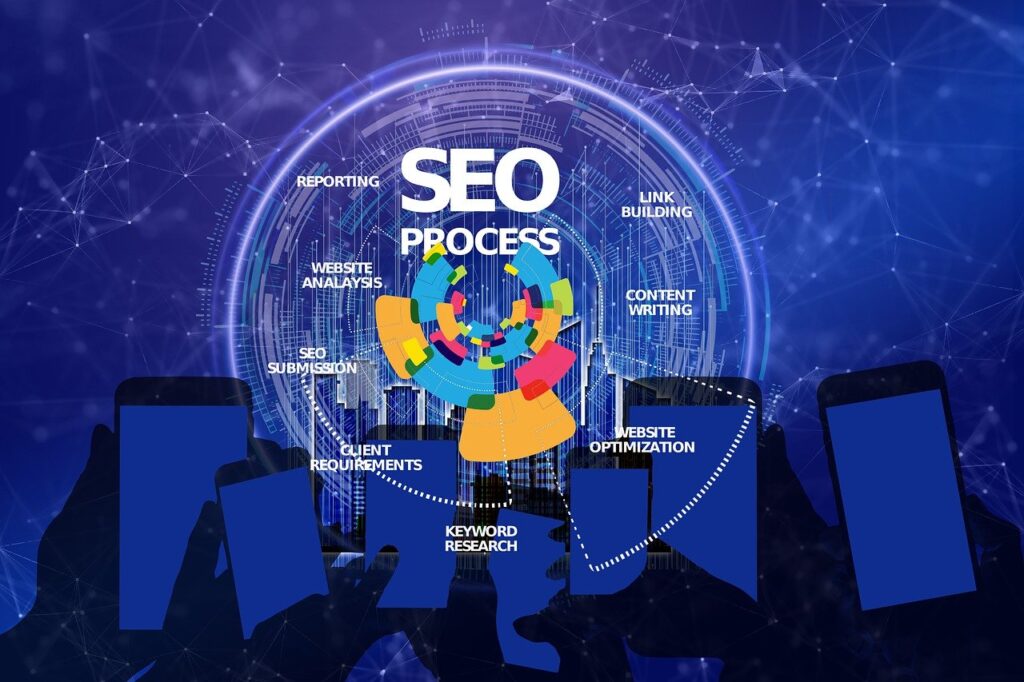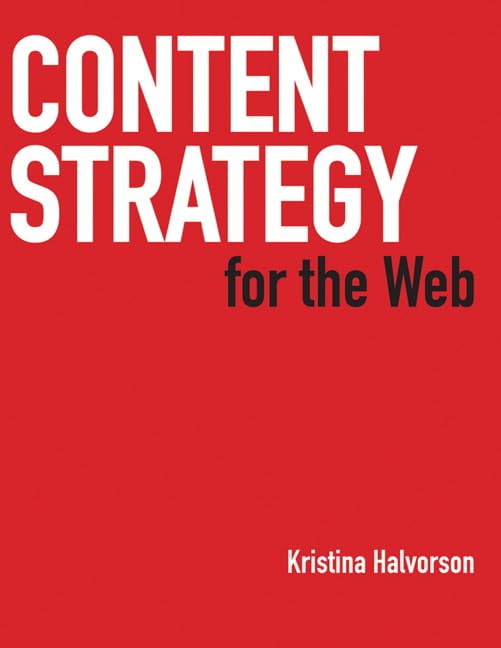E-commerce businesses must stay ahead of the competition by leveraging the right marketing tools and services, in today’s ever-evolving digital landscape. From search engine optimization (SEO) to influencer marketing, the array of strategies available can seem overwhelming. The E-commerce Network Marketing guide aims to simplify the process by providing a detailed overview of the essential tools and services that can elevate your e-commerce marketing efforts.
Whether you’re a seasoned marketer looking to refine your strategy or a newcomer aiming to establish a robust online presence, this guide covers all aspects of e-commerce marketing. We’ll delve into the best SEO tools for businesses of all sizes, explore the nuances of influencer and affiliate marketing, and highlight the importance of customer reviews and testimonials. Additionally, we’ll provide actionable insights on utilizing PPC advertising and content marketing to drive traffic and increase conversions.
By understanding and implementing these tools and strategies, you can enhance your brand’s visibility, engage with your audience more effectively, and ultimately boost your sales. Let’s embark on this journey to unlock the full potential of your e-commerce business with the ultimate guide to e-commerce marketing tools and services.
Table of Content
Certification and Professional Development

Google Digital Marketing & E-commerce Professional Certificate Cost
Overview of the Certification
The Google Digital Marketing & E-commerce Professional Certificate is designed to equip learners with the essential skills needed to excel in the fields of digital marketing and e-commerce. This comprehensive program covers a range of topics, including search engine optimization (SEO), search engine marketing (SEM), social media marketing, content marketing, e-commerce strategies, and more. The certification aims to provide practical knowledge through hands-on projects, making it suitable for both beginners and those looking to advance their careers.
Key Features:
- Duration: Approximately 6 months (at a pace of 10 hours per week)
- Modules: Multiple modules covering various aspects of digital marketing and e-commerce
- Format: Online, self-paced learning
- Provider: Google, in partnership with Coursera
- Credential: Professional Certificate upon completion
Breakdown of the Costs Involved
Understanding the cost structure of the Google Digital Marketing & E-commerce Professional Certificate is crucial for prospective learners. Here is a detailed breakdown:
- Subscription Model:
- Cost per Month: $49 (subject to change based on region and promotional offers)
- Estimated Total Cost: $294 (for a 6-month duration)
- Payment Options: Monthly subscription, which can be paused or canceled at any time
- Financial Aid:
- Availability: Financial aid and scholarships are available for eligible learners
- Application Process: Applicants need to submit a financial aid application through Coursera
- Additional Costs:
- Course Materials: All necessary materials are included in the subscription fee
- Certification Fee: No additional fee for the certification upon completion of the course
Benefits of Obtaining this Certification
Earning the Google Digital Marketing & E-commerce Professional Certificate offers several significant advantages:
- Industry Recognition:
- Google is a highly respected name in the digital marketing industry, and this certification carries considerable weight.
- Comprehensive Skill Set:
- The course covers a wide array of topics, ensuring that learners acquire a well-rounded understanding of digital marketing and e-commerce.
- Practical Experience:
- The program includes hands-on projects that allow learners to apply their knowledge in real-world scenarios, making them job-ready.
- Career Advancement:
- This certification can enhance your resume and make you a more attractive candidate for employers, opening doors to various digital marketing and e-commerce roles.
- Networking Opportunities:
- Learners can connect with peers and industry professionals through Coursera’s platform, expanding their professional network.
- Flexibility:
- The online, self-paced format allows learners to study at their convenience, making it ideal for working professionals and those with busy schedules.
- Job Search Resources:
- Google provides additional resources to help certificate holders find job opportunities, including resume-building tools and interview tips.
By obtaining the Google Digital Marketing & E-commerce Professional Certificate, individuals can gain valuable skills and credentials that can significantly impact their careers in digital marketing and e-commerce.
E-commerce Marketing Strategies

E-commerce Network Marketing
Definition and Importance
E-commerce network marketing involves leveraging a network of individuals to promote and sell products online. It combines the principles of traditional network marketing with the convenience and reach of e-commerce. This strategy relies on direct selling, where network marketers use their personal connections and online presence to promote products, often earning commissions on sales made through their referrals.
Importance:
- Expands Reach: Network marketing helps businesses tap into the personal networks of their marketers, significantly extending their reach.
- Cost-Effective: It reduces marketing costs by utilizing independent marketers who work on a commission basis.
- Builds Trust: Personal recommendations from network marketers can build trust and credibility with potential customers.
- Scalability: E-commerce network marketing allows for rapid scaling as new marketers join and grow their networks.
Key Strategies for Successful Network Marketing
- Choose the Right Products:
- Select products that are high-quality, in-demand, and have a unique selling proposition.
- Ensure products are relevant to the target audience of your network marketers.
- Provide Comprehensive Training:
- Offer training programs to educate network marketers about the products, company values, and effective selling techniques.
- Include digital marketing strategies to help them leverage social media and other online platforms.
- Create a Strong Online Presence:
- Develop a user-friendly e-commerce platform where marketers can easily access products and track their sales.
- Utilize social media, blogs, and email marketing to promote the business and support network marketers.
- Offer Attractive Incentives:
- Design a commission structure that rewards high performers.
- Provide additional incentives such as bonuses, recognition programs, and exclusive events.
- Leverage Technology:
- Use CRM (Customer Relationship Management) systems to manage and support your network.
- Implement tracking and analytics tools to monitor performance and optimize strategies.
- Foster Community:
- Build a supportive community among network marketers through regular meetings, online forums, and social media groups.
- Encourage sharing of best practices and success stories to motivate and inspire the network.
Case Studies and Examples
- Mary Kay:
- Mary Kay is a renowned example of a successful network marketing company. They utilize e-commerce to allow their beauty consultants to sell products online, expanding their reach and simplifying the sales process.
- Amway:
- Amway has integrated e-commerce with network marketing, providing their independent business owners with an online platform to sell products. This has enabled them to reach a global audience and streamline operations.
E-commerce Marketing Jobs
Overview of the Job Market
The job market for e-commerce marketing is robust and growing rapidly as more businesses shift to online sales. E-commerce marketing roles are diverse and can range from entry-level positions to senior management roles. Common job titles include:
- E-commerce Marketing Specialist
- Digital Marketing Manager
- SEO Specialist
- Social Media Manager
- Content Marketing Strategist
- PPC (Pay-Per-Click) Manager
- Email Marketing Specialist
Essential Skills and Qualifications
- Digital Marketing Expertise:
- Proficiency in SEO, SEM, social media marketing, email marketing, and content marketing.
- Familiarity with digital marketing tools such as Google Analytics, Ahrefs, SEMrush, and social media platforms.
- Analytical Skills:
- Ability to analyze data, interpret metrics, and generate actionable insights.
- Experience with data analysis tools and techniques.
- Technical Skills:
- Understanding of e-commerce platforms (e.g., Shopify, Magento, WooCommerce).
- Basic knowledge of HTML, CSS, and web design principles can be advantageous.
- Creativity:
- Strong creative skills for developing engaging marketing campaigns and content.
- Experience with graphic design tools like Canva or Adobe Creative Suite is a plus.
- Communication and Collaboration:
- Excellent written and verbal communication skills.
- Ability to work collaboratively with cross-functional teams.
- Project Management:
- Strong organizational skills and ability to manage multiple projects simultaneously.
- Familiarity with project management tools like Trello, Asana, or Jira.
Tips for Landing E-commerce Marketing Jobs
- Build a Strong Online Presence:
- Create and maintain professional profiles on LinkedIn and other relevant platforms.
- Showcase your expertise through a personal blog or portfolio website.
- Gain Relevant Experience:
- Internships, freelance projects, or volunteer work can provide valuable experience.
- Work on personal projects to build a portfolio of successful campaigns.
- Network:
- Attend industry events, webinars, and conferences to connect with professionals in the field.
- Join online communities and participate in discussions related to e-commerce marketing.
- Certifications and Courses:
- Obtain certifications in relevant areas (e.g., Google Analytics, HubSpot Content Marketing).
- Enroll in online courses to stay updated with the latest trends and best practices.
- Tailor Your Resume and Cover Letter:
- Highlight relevant skills, experience, and achievements.
- Customize your application for each job to align with the specific requirements and responsibilities.
By leveraging these strategies and continuously honing your skills, you can successfully navigate the dynamic field of e-commerce marketing and secure a rewarding career.
SEO Tools for E-commerce

Best Enterprise SEO Tools
Comprehensive List of Top Enterprise SEO Tools
- Ahrefs
- Features: Comprehensive backlink analysis, keyword research, site audits, competitor analysis.
- Benefits: Detailed insights into competitors’ strategies, robust link-building tools, accurate keyword data.
- SEMrush
- Features: Keyword research, site audits, rank tracking, competitor analysis, content optimization.
- Benefits: All-in-one SEO toolkit, easy-to-use interface, extensive database for keyword and competitive research.
- Moz Pro
- Features: Keyword research, link building, site audits, rank tracking, on-page optimization.
- Benefits: Reliable SEO data, user-friendly, excellent community support and resources.
- BrightEdge
- Features: Data-driven insights, content optimization, competitor analysis, performance tracking.
- Benefits: AI-powered recommendations, integration with other marketing tools, real-time analytics.
- Conductor
- Features: Organic marketing insights, content optimization, competitive analysis, workflow management.
- Benefits: Extensive data integrations, actionable insights, collaborative features.
Best SEO Tools for Small Business
Recommended SEO Tools for Small Businesses
- Ubersuggest
- Features: Keyword research, site audits, backlink analysis, content ideas.
- Benefits: Affordable, easy-to-use, comprehensive keyword and SEO analysis.
- KWFinder
- Features: Keyword research, SERP analysis, rank tracking.
- Benefits: User-friendly, affordable, accurate keyword difficulty scores.
- SEOquake
- Features: Browser extension, on-page SEO audit, keyword analysis.
- Benefits: Free, quick access to SEO metrics, useful for competitive analysis.
Cost-effective Options and Their Features
- Google Search Console
- Features: Performance reports, URL inspection, crawl stats, index coverage.
- Benefits: Free, essential for monitoring site performance in Google search.
- Yoast SEO (WordPress Plugin)
- Features: On-page optimization, readability check, XML sitemaps, schema implementation.
- Benefits: Free and premium versions, widely used, comprehensive on-page SEO guidance.
Best Etsy SEO Tool
Top SEO Tools Specifically for Etsy Sellers
- eRank
- Features: Keyword research, listing audits, competitor tracking, trend analysis.
- Benefits: Tailored for Etsy sellers, easy to use, actionable insights.
- Marmalead
- Features: Keyword research, market analysis, listing grades, SEO tracking.
- Benefits: Etsy-focused, helps improve listing visibility, user-friendly interface.
How to Optimize Etsy Listings for Better Visibility
- Keyword Research: Use tools like eRank and Marmalead to find high-traffic keywords.
- Optimize Titles and Tags: Include relevant keywords in your titles and tags.
- Improve Photos and Descriptions: Ensure high-quality images and detailed descriptions.
- Encourage Reviews: Positive reviews boost your listing’s credibility and visibility.
Inexpensive SEO Tools
List of Budget-Friendly SEO Tools
- Serpstat
- Features: Keyword research, site audit, backlink analysis, rank tracking.
- Benefits: Affordable, comprehensive SEO toolkit, user-friendly.
- Mangools
- Features: Keyword research (KWFinder), SERP analysis (SERPChecker), backlink analysis (LinkMiner).
- Benefits: Cost-effective, easy-to-use, great for small businesses.
Comparison of Features and Pricing
- Ubersuggest vs. KWFinder: Both offer keyword research and site audit features. Ubersuggest is more affordable, while KWFinder provides more accurate keyword difficulty scores.
- Serpstat vs. Mangools: Both are comprehensive, but Serpstat offers more features for a slightly higher price.
SEO Tools Box
Essential SEO Tools for Every Marketer
- Google Analytics
- Features: Traffic analysis, user behavior, conversion tracking.
- Benefits: Free, essential for understanding site performance.
- Google Search Console
- Features: Performance monitoring, URL inspection, index coverage.
- Benefits: Free, vital for monitoring search presence.
- Yoast SEO
- Features: On-page SEO, readability check, XML sitemaps.
- Benefits: Free and premium, essential for WordPress sites.
How to Create Your Own SEO Toolbox
- Identify Your Needs: Determine the specific SEO tasks you need tools for.
- Choose Versatile Tools: Select tools that offer multiple features.
- Balance Free and Paid Tools: Use a mix of free tools (e.g., Google Analytics) and affordable paid tools (e.g., Ubersuggest).
Amazon SEO Tools
Best Tools for Optimizing Amazon Product Listings
- Jungle Scout
- Features: Product research, keyword research, sales analytics.
- Benefits: Comprehensive tool for Amazon sellers, accurate sales estimates.
- Helium 10
- Features: Keyword research, product listing optimization, competitor tracking.
- Benefits: All-in-one tool, extensive features for Amazon SEO.
Tips and Strategies for Amazon SEO
- Keyword Optimization: Use relevant keywords in titles, bullet points, and descriptions.
- High-Quality Images: Ensure your product images are high-resolution and show the product from multiple angles.
- Customer Reviews: Encourage positive reviews to boost credibility.
- Competitive Pricing: Monitor competitors’ prices and adjust accordingly.
eBay SEO Tool
Top Tools for Improving eBay Listing Visibility
- Terapeak (by eBay)
- Features: Market research, sales trends, competitor analysis.
- Benefits: Directly integrated with eBay, provides valuable insights.
- Algopix
- Features: Product research, market analysis, pricing insights.
- Benefits: Comprehensive market data, user-friendly.
Practical Tips for eBay SEO
- Optimize Titles: Use relevant keywords in titles.
- High-Quality Images: Include clear, high-quality photos.
- Detailed Descriptions: Provide thorough and accurate product descriptions.
- Competitive Pricing: Use tools like Terapeak to set competitive prices.
Free SEO Tools for YouTube
Best Free Tools for YouTube SEO
- TubeBuddy
- Features: Keyword research, tag suggestions, SEO audits.
- Benefits: Free basic plan, easy-to-use browser extension.
- VidIQ
- Features: Keyword research, competition analysis, video SEO.
- Benefits: Free basic plan, useful insights for video optimization.
How to Optimize Your Videos for Better Search Rankings
- Keyword Research: Use tools like TubeBuddy and VidIQ to find relevant keywords.
- Optimize Titles and Descriptions: Include keywords in your video titles and descriptions.
- Tags: Add relevant tags to your videos.
- Engaging Thumbnails: Create eye-catching thumbnails to attract clicks.
Do It Yourself SEO Tools
DIY SEO Tools for Hands-On Marketers
- Screaming Frog SEO Spider
- Features: Site audits, link analysis, on-page SEO.
- Benefits: Free for up to 500 URLs, comprehensive crawling capabilities.
- Google PageSpeed Insights
- Features: Page speed analysis, performance recommendations.
- Benefits: Free, essential for improving site speed.
Benefits and Limitations of DIY SEO
Benefits:
- Cost-effective.
- Direct control over SEO efforts.
Limitations:
- Time-consuming.
- Requires a learning curve.
SaaS SEO Tools
Overview of SaaS-Based SEO Tools
- SEMrush
- Features: Keyword research, site audits, rank tracking, competitor analysis.
- Benefits: All-in-one toolkit, regular updates and improvements.
- Ahrefs
- Features: Backlink analysis, keyword research, content exploration.
- Benefits: Comprehensive data, robust link-building tools.
Benefits of Using SaaS Tools for SEO
- Scalability: Easily scale your SEO efforts as your business grows.
- Regular Updates: Access to the latest features and improvements.
- Ease of Use: User-friendly interfaces and customer support.
Baidu SEO Tools
Tools for Optimizing Websites for Baidu
- Baidu Webmaster Tools
- Features: Site submission, index status, keyword analysis.
- Benefits: Direct access to Baidu’s indexing and ranking data.
- Dragon Metrics
- Features: Keyword research, rank tracking, backlink analysis.
- Benefits: Comprehensive SEO tool for the Chinese market.
Key Features and Benefits
- Localization: Tools tailored for the Chinese market.
- Comprehensive Insights: Detailed analysis of site performance on Baidu.
SEO Benchmarking Tool
Importance of Benchmarking in SEO
- Performance Tracking: Measure the effectiveness of your SEO efforts.
- Competitive Analysis: Understand how you compare to competitors.
- Goal Setting: Set realistic and achievable SEO goals.
Best Tools for SEO Benchmarking
- SEMrush
- Features: Keyword tracking, competitor analysis, site audits.
- Benefits: Comprehensive data, easy to use.
- Ahrefs
- Features: Backlink analysis, keyword tracking, content analysis.
- Benefits: Detailed insights, robust link-building tools.
SEO Tools Excel
How to Use Excel for SEO
- Data Organization: Use Excel to organize and analyze SEO data.
- Custom Reports: Create custom reports and dashboards.
- Keyword Tracking: Track keyword rankings and performance over time.
Top Excel Templates and Plugins for SEO
- SEO Tools for Excel
- Features: Data import, on-page analysis, backlink analysis.
- Benefits: Comprehensive toolkit within Excel, customizable.
- Keyword Tracking Templates
- Features: Pre-built templates for tracking keyword rankings.
- Benefits: Easy to use, customizable to your needs.
By leveraging these tools and strategies, e-commerce businesses can significantly enhance their SEO efforts, improve visibility, and drive more traffic to their online stores.
Google Search Console
Google Search Console vs Google Analytics
Comparison of Features and Benefits
- Features:
- Performance Reports: Provides data on website traffic, search queries, and user behavior on the search engine results pages (SERPs).
- Index Coverage: Shows which pages are indexed and highlights any issues with indexing.
- URL Inspection Tool: Allows you to check the status of individual URLs and request indexing.
- Crawl Reports: Details on how Googlebot crawls your site, including errors and statistics.
- Sitemaps: Submit and manage your XML sitemaps.
- Security Issues: Alerts you to security problems like malware or hacking.
- Mobile Usability: Reports on mobile usability issues affecting your site.
- Benefits:
- Direct insights into how Google views and indexes your site.
- Tools to resolve indexing and crawling issues.
- Essential for technical SEO and ensuring search visibility.
Google Analytics (GA):
- Features:
- Audience Reports: Detailed insights into user demographics, interests, geography, and behavior.
- Acquisition Reports: Information on how users arrive at your site (e.g., organic search, social media, referrals).
- Behavior Reports: Analysis of how users interact with your site, including pageviews, bounce rate, and session duration.
- Conversions: Track goals, e-commerce transactions, and other conversion metrics.
- Real-Time Data: Monitor current website activity in real-time.
- Custom Dashboards and Reports: Create tailored reports to meet specific business needs.
- Benefits:
- Comprehensive analysis of user behavior and site performance.
- Valuable for marketing strategies, user experience improvement, and conversion optimization.
- Integration with other Google products like Google Ads for in-depth campaign analysis.
Which Tool to Use for Specific Purposes
- Technical SEO and Indexing Issues:
- Use Google Search Console: Provides detailed insights into how Google crawls and indexes your site, helping to identify and fix technical issues.
- User Behavior and Marketing Analysis:
- Use Google Analytics: Offers extensive data on user demographics, behavior, and conversion tracking, crucial for understanding your audience and optimizing marketing efforts.
- Real-Time Monitoring:
- Use Google Analytics: Allows you to monitor website activity in real-time, useful for tracking the immediate impact of marketing campaigns or website changes.
Add User to Google Search Console
Step-by-Step Guide on Adding Users
- Sign in to Google Search Console:
- Go to Google Search Console and sign in with your Google account.
- Select Property:
- Choose the property (website) you want to add a user to from the property selector dropdown.
- Go to Settings:
- Click on the “Settings” gear icon in the left-hand menu.
- Users and Permissions:
- Select “Users and permissions” from the Settings menu.
- Add User:
- Click the “Add user” button.
- Enter Email Address:
- Enter the email address of the user you want to add.
- Choose Permission Level:
- Select the appropriate permission level (Owner, Full, or Restricted). Full access allows the user to view all data and perform most actions, while Restricted access is more limited.
- Add User:
- Click the “Add” button to confirm.
Best Practices for Managing Users
- Assign Appropriate Permissions:
- Only give users the level of access they need. Use Restricted access for users who only need to view data.
- Regularly Review User Access:
- Periodically check and update user permissions to ensure that only necessary personnel have access.
- Remove Unnecessary Users:
- Remove access for users who no longer need it to maintain security and data integrity.
Google Search Console Logo and Crawl Reports
Understanding the GSC Logo and Its Significance
- GSC Logo:
- The Google Search Console logo symbolizes the tool’s focus on helping webmasters and SEO professionals understand and improve their site’s presence on Google Search. It is a recognizable icon for Google’s suite of webmaster tools.
How to Use Crawl Reports for Monitoring Website Health
- Access Crawl Reports:
- In Google Search Console, navigate to the “Coverage” section in the left-hand menu.
- Review Crawl Errors:
- Errors: Identify pages that Googlebot couldn’t crawl due to issues like server errors (5xx), not found (404), or other crawl anomalies.
- Warnings: Check for issues that might affect indexing but are not critical errors.
- Analyze Valid Pages:
- Valid with Warnings: Look at pages that are indexed but have issues that could impact performance.
- Valid: Ensure all important pages are listed as valid and indexed.
- Submit Sitemaps:
- Go to the “Sitemaps” section and submit your XML sitemap to help Googlebot discover and index your pages more efficiently.
- Fix Errors and Resubmit URLs:
- Use the URL Inspection tool to check and fix specific URL issues. Once resolved, request re-indexing to ensure Google crawls the updated page.
- Monitor Crawl Stats:
- Under “Settings,” review the “Crawl stats” report to see how frequently Googlebot crawls your site and identify any unusual spikes or drops.
By understanding and utilizing these features in Google Search Console, you can ensure your website is optimized for search engines, address technical issues promptly, and improve your overall SEO strategy.
Content Marketing Tools and Services

Content Marketing Jobs
Current Job Trends in Content Marketing
The field of content marketing is evolving rapidly, with increasing demand for professionals who can create, manage, and optimize content to drive business goals. Some key trends include:
- Increased Demand for Digital Content: Businesses are focusing more on digital content, including blogs, social media posts, videos, and podcasts.
- Specialization: There is a growing need for specialists in areas like SEO content, social media content, video production, and content strategy.
- Remote Work: The rise of remote work opportunities allows content marketers to work from anywhere, broadening the talent pool for companies.
- Data-Driven Marketing: Content marketers are increasingly using data and analytics to guide their strategies and measure success.
Skills and Qualifications Needed
- Writing and Editing: Strong writing and editing skills are fundamental.
- SEO Knowledge: Understanding of search engine optimization to create content that ranks well.
- Analytical Skills: Ability to analyze data and use insights to improve content performance.
- Content Management Systems (CMS): Proficiency in CMS platforms like WordPress.
- Social Media: Knowledge of various social media platforms and how to create engaging content for each.
- Creativity: Ability to generate original ideas and creative content.
- Project Management: Skills to manage multiple content projects and deadlines.
Content Marketing Consultant and Strategist
Roles and Responsibilities
- Content Marketing Consultant:
- Analyzes client needs and creates tailored content marketing strategies.
- Provides guidance on content creation, distribution, and optimization.
- Tracks and reports on content performance.
- Content Marketing Strategist:
- Develops comprehensive content strategies aligned with business goals.
- Oversees content creation, ensuring consistency and quality.
- Collaborates with other marketing teams to integrate content across channels.
How to Become a Successful Consultant or Strategist
- Build a Strong Portfolio: Showcase your work and successes in various content marketing projects.
- Gain Experience: Work on diverse content marketing projects, either in-house or as a freelancer.
- Stay Updated: Keep up with the latest trends, tools, and best practices in content marketing.
- Network: Connect with other professionals in the industry through events, social media, and online communities.
- Certifications: Obtain relevant certifications, such as HubSpot Content Marketing Certification, to enhance your credibility.
Content Marketing World 2024
Overview of the Upcoming Event
Content Marketing World 2024 is one of the largest conferences in the content marketing industry, bringing together professionals from around the world to learn, network, and be inspired.
Keynote Speakers and Topics to Expect
- Keynote Speakers: Industry leaders and influencers will share their insights and experiences. Past speakers have included content marketing pioneers and top executives from major brands.
- Topics: Expect sessions on the latest content marketing trends, advanced SEO techniques, content strategy development, AI in content marketing, and more.
Best Content Marketing Examples
Case Studies of Successful Content Marketing Campaigns
- Red Bull’s Content Hub:
- Strategy: Created a lifestyle-oriented content hub focusing on extreme sports and adventure.
- Outcome: Enhanced brand identity and engagement, becoming a leader in branded content.
- Coca-Cola’s Share a Coke Campaign:
- Strategy: Personalized Coke bottles with names and created a massive social media buzz.
- Outcome: Increased sales and brand loyalty, driven by user-generated content.
Lessons Learned and Best Practices
- Know Your Audience: Create content that resonates with your target audience.
- Be Consistent: Maintain a consistent brand voice and publishing schedule.
- Use Data: Leverage data to understand what content works best and adjust strategies accordingly.
- Encourage Engagement: Create opportunities for your audience to interact with your content.
Content Marketing Automation
Tools for Automating Content Marketing Tasks
- HubSpot: Comprehensive tool for content creation, distribution, and analytics.
- Buffer: Automates social media posting and provides analytics.
- Hootsuite: Manages and schedules social media content across multiple platforms.
- Mailchimp: Automates email marketing campaigns and tracks performance.
Benefits of Automation in Content Marketing
- Saves Time: Automates repetitive tasks, allowing marketers to focus on strategy and creativity.
- Consistency: Ensures consistent posting schedules across multiple channels.
- Improved Analytics: Provides insights and data to optimize content performance.
Content Marketing KPIs
Key Performance Indicators for Measuring Content Marketing Success
- Traffic: Measures the number of visitors to your content.
- Engagement: Tracks metrics like time on page, bounce rate, and social shares.
- Conversions: Measures the number of visitors who take a desired action (e.g., signing up for a newsletter).
- SEO Performance: Tracks keyword rankings and organic search traffic.
- Lead Generation: Measures the number of leads generated from content marketing efforts.
Tools for Tracking and Reporting KPIs
- Google Analytics: Tracks website traffic, user behavior, and conversions.
- SEMrush: Provides insights into keyword rankings and SEO performance.
- HubSpot: Offers comprehensive analytics for content performance and lead generation.
- Sprout Social: Tracks social media engagement and performance.
Content Marketing Resources
Essential Resources for Content Marketers
- Books:
- Blogs:
- Online Courses:
- HubSpot Academy: Content Marketing Certification
- Coursera: The Strategy of Content Marketing
- LinkedIn Learning: Content Marketing Foundations



Remote Content Marketing Jobs
Opportunities for Remote Work in Content Marketing
- Job Boards: Websites like Remote.co, We Work Remotely, and FlexJobs list remote content marketing positions.
- Freelancing Platforms: Upwork, Freelancer, and Fiverr offer freelance content marketing opportunities.
- Company Websites: Many companies advertise remote positions on their own career pages.
How to Find and Secure Remote Positions
- Network Online: Join content marketing groups on LinkedIn and Facebook.
- Build a Strong Online Presence: Showcase your work on a personal website or portfolio.
- Tailor Applications: Customize your resume and cover letter for each remote job application.
Real Estate Content Marketing
Strategies for Content Marketing in the Real Estate Industry
- Local SEO: Optimize content for local keywords and create content about the local area.
- Virtual Tours: Create video tours of properties to engage potential buyers.
- Educational Content: Provide tips on buying, selling, and maintaining properties.
- Client Testimonials: Share success stories and testimonials from satisfied clients.
Examples and Best Practices
- Neighborhood Guides: Create detailed guides about local neighborhoods to attract buyers.
- Market Updates: Regularly publish updates on the real estate market to position yourself as an expert.
- Social Media Engagement: Use platforms like Instagram and Facebook to showcase properties and engage with potential clients.
Brand Marketing vs Content Marketing
Differences and Overlaps
- Brand Marketing: Focuses on building brand identity and loyalty through consistent messaging and visual elements.
- Content Marketing: Focuses on creating valuable content to attract and engage a target audience.
How to Integrate Both Strategies Effectively
- Consistent Messaging: Ensure all content aligns with your brand’s voice and values.
- Cross-Channel Promotion: Use content marketing to support brand campaigns and vice versa.
- Unified Goals: Align the goals of both strategies to create a cohesive marketing approach.
Content Marketing and Branding
How Content Marketing Enhances Brand Identity
- Storytelling: Use content to tell your brand’s story and connect with your audience on an emotional level.
- Value Proposition: Clearly communicate what makes your brand unique through valuable content.
- Customer Relationships: Build trust and loyalty by consistently providing helpful and engaging content.
Case Studies of Successful Branding Through Content
- Nike:
- Strategy: Uses powerful storytelling and inspirational content to reinforce its brand identity.
- Outcome: Strong brand loyalty and recognition.
- Airbnb:
- Strategy: Shares user-generated content and stories from hosts and travelers to build a community-driven brand.
- Outcome: Increased engagement and brand trust.
By leveraging these tools and strategies, content marketers can enhance their effectiveness, drive better results, and support overall business goals.
Social Media Marketing Tools

Social Media Marketing Packages
Overview of Different Packages Available
- Basic Package:
- Profile Setup and Optimization: Setting up social media profiles on platforms like Facebook, Instagram, Twitter, and LinkedIn. Optimization involves updating profile pictures, bios, and other relevant information to align with your brand.
- Content Creation: Creation of basic content such as posts, images, and updates (usually 10 posts per month).
- Basic Analytics: Monitoring and reporting on basic metrics such as likes, comments, and shares.
- Limited Engagement: Responding to a small number of comments and messages.
- Cost: Typically $500-$1,000 per month.
- Resources:
- Standard Package:
- Profile Management: Ongoing management of social media profiles.
- Content Creation and Scheduling: Creation of more frequent content (usually 20 posts per month) and scheduling them using tools like Hootsuite or Buffer.
- Advanced Analytics: Detailed reports on engagement, reach, and other important metrics.
- Targeted Ad Campaigns: Running basic ad campaigns on platforms like Facebook and Instagram.
- Moderate Engagement: Responding to comments and messages regularly.
- Cost: Typically $1,000-$2,500 per month.
- Resources:
- Premium Package:
- Comprehensive Social Media Strategy: Development of a detailed social media strategy aligned with business goals.
- High-Quality Content Creation: Professional graphics, videos, and blog posts (typically 30+ posts per month).
- Extensive Ad Campaigns: Advanced ad campaigns with detailed targeting and retargeting strategies.
- Full Engagement Management: Full-time monitoring and engagement with followers.
- Influencer Collaborations: Identifying and collaborating with influencers to boost reach.
- Crisis Management: Handling any social media crises or negative feedback promptly and professionally.
- Monthly Reports: Detailed monthly reports with insights and recommendations.
- Cost: Typically $2,500-$5,000+ per month.
- Resources:
How to Choose the Right Package for Your Business
- Identify Your Goals:
- Determine what you want to achieve with your social media marketing (e.g., brand awareness, lead generation, customer engagement).
- Evaluate Your Budget:
- Assess how much you can afford to spend on social media marketing each month.
- Consider Your Resources:
- Determine if you have in-house resources to handle certain tasks or if you need comprehensive external support.
- Analyze Your Audience:
- Understand where your audience is most active and choose a package that covers those platforms.
- Assess Agency Expertise:
- Research the agency’s experience, case studies, and reviews to ensure they can deliver the results you need.
Social Media Marketing Companies Near Me
How to Find and Select Local Social Media Marketing Companies
- Online Search:
- Use search engines and business directories to find local social media marketing companies.
- Look for companies with high ratings and positive reviews.
- Networking:
- Ask for recommendations from other business owners, colleagues, or networking groups.
- Local Business Listings:
- Check local business listings and industry-specific directories.
Benefits of Working with Local Agencies
- Face-to-Face Meetings:
- Easier to schedule in-person meetings to discuss strategies and progress.
- Local Market Knowledge:
- Local agencies have a better understanding of the local market and audience.
- Community Connections:
- Potential for leveraging local influencers and community connections.
Social Media Marketing Internship and Jobs Remote
Opportunities for Internships and Remote Jobs
- Job Boards:
- Websites like Indeed, Glassdoor, and LinkedIn list internships and remote job opportunities in social media marketing.
- Company Websites:
- Many companies post job openings directly on their career pages.
- Freelancing Platforms:
- Platforms like Upwork and Fiverr offer freelance and remote opportunities.
Tips for Landing Positions and Gaining Experience
- Build a Portfolio:
- Showcase your work and skills through a personal website or portfolio.
- Network:
- Connect with professionals in the industry through LinkedIn and industry events.
- Gain Certifications:
- Obtain relevant certifications from platforms like HubSpot, Hootsuite, or Google.
- Volunteer:
- Offer to manage social media for non-profits or small businesses to gain experience.
Social Media Marketing Books
Must-Read Books for Social Media Marketers
- “Jab, Jab, Jab, Right Hook” by Gary Vaynerchuk
- Review: Offers practical advice on creating content for different social media platforms.
- Recommendation: Essential for understanding platform-specific strategies.
- “The Art of Social Media: Power Tips for Power Users” by Guy Kawasaki and Peg Fitzpatrick
- Review: Provides actionable tips for leveraging social media effectively.
- Recommendation: Great for beginners and intermediate marketers.
- “Contagious: How to Build Word of Mouth in the Digital Age” by Jonah Berger
- Review: Explores the psychology behind why content goes viral.
- Recommendation: Useful for creating shareable content.
- “Hug Your Haters” by Jay Baer
- Review: Focuses on customer service and handling feedback on social media.
- Recommendation: Important for managing online reputation.
Social Media Marketing Services Packages
Detailed Description of Service Packages Offered by Agencies
- Content Creation and Scheduling:
- Includes: Creating and scheduling posts, images, videos, and stories.
- Benefits: Consistent and engaging content that aligns with your brand voice.
- Advertising Campaigns:
- Includes: Creating and managing paid social media ads, targeting, and optimization.
- Benefits: Increased reach and targeted engagement.
- Analytics and Reporting:
- Includes: Monthly reports on performance metrics, insights, and recommendations.
- Benefits: Data-driven decision-making and strategy adjustments.
- Community Management:
- Includes: Responding to comments, messages, and reviews.
- Benefits: Improved customer engagement and satisfaction.
- Influencer Collaborations:
- Includes: Identifying and partnering with relevant influencers.
- Benefits: Enhanced credibility and reach through influencer endorsements.
How to Evaluate and Choose the Best Package
- Align with Goals:
- Ensure the services offered match your business objectives.
- Check Track Record:
- Review case studies and testimonials to assess agency effectiveness.
- Understand Pricing:
- Compare the cost of packages with the value of services provided.
- Evaluate Flexibility:
- Choose packages that can be customized to fit your specific needs.
Social Media Marketing Specialist
Role and Responsibilities of a Social Media Marketing Specialist
- Content Creation: Develop and curate engaging content for social media platforms.
- Strategy Development: Create and implement social media strategies aligned with business goals.
- Community Management: Engage with followers, respond to comments and messages, and foster a community.
- Analytics and Reporting: Monitor social media metrics, analyze performance, and adjust strategies accordingly.
- Ad Campaign Management: Plan and execute paid social media campaigns.
Skills Required and Career Path
- Skills Required:
- Strong writing and editing skills.
- Proficiency in social media platforms and tools.
- Analytical skills to interpret data and insights.
- Creativity and visual storytelling abilities.
- Project management and organizational skills.
- Career Path:
- Entry-Level: Social Media Coordinator or Assistant
- Mid-Level: Social Media Specialist or Manager
- Senior-Level: Social Media Director or Digital Marketing Director
Social Media Ideas for Marketing Agencies
Creative Social Media Campaign Ideas
- User-Generated Content Campaigns:
- Encourage followers to share their own content using a specific hashtag.
- Giveaways and Contests:
- Run contests and giveaways to increase engagement and reach.
- Behind-the-Scenes Content:
- Share behind-the-scenes looks at your business or creative process.
- Influencer Takeovers:
- Partner with influencers to take over your social media accounts for a day.
- Live Q&A Sessions:
- Host live sessions to answer questions and engage directly with your audience.
Case Studies of Successful Campaigns by Agencies
- Dove’s Real Beauty Campaign:
- Focused on user-generated content and authentic storytelling.
- Resulted in increased brand loyalty and engagement.
- ALS Ice Bucket Challenge:
- Viral campaign that leveraged user participation to raise awareness and funds.
- Demonstrated the power of social media for social causes.
White Label Social Media Marketing
Benefits and Challenges of White Label Services
- Benefits:
- Scalability: Expand service offerings without additional resources.
- Expertise: Leverage the expertise of specialized agencies.
- Focus: Focus on core business activities while outsourcing social media tasks.
- Challenges:
- Quality Control: Ensuring consistent quality across outsourced services.
- Communication: Maintaining clear communication between your business and the white label provider.
- Branding: Ensuring the white label services align with your brand voice and values.
How to Find and Work with White Label Providers
- Research and Vet Providers:
- Look for providers with a proven track record and positive reviews.
- Define Scope and Expectations:
- Clearly outline the services required and expectations for quality and communication.
- Maintain Regular Communication:
- Schedule regular check-ins and updates to ensure alignment and address any issues promptly.
- Monitor Performance:
- Continuously monitor the performance of the white label services to ensure they meet your standards and goals.
By leveraging these tools, strategies, and insights, businesses can effectively manage their social media marketing efforts and achieve their objectives.
PPC Advertising

Attorney PPC Advertising
Strategies for PPC Advertising in the Legal Industry
- Targeted Keyword Selection:
- Focus on high-intent keywords such as “personal injury lawyer,” “divorce attorney near me,” or “criminal defense lawyer.”
- Use long-tail keywords to capture specific queries like “affordable DUI attorney in [city].”
- Geo-Targeting:
- Set your campaigns to target specific geographic areas where your services are available.
- Utilize radius targeting around your office location to attract local clients.
- Ad Copy Optimization:
- Write compelling ad copy that highlights your unique selling points, such as years of experience, free consultations, or specialization in a particular legal field.
- Include a strong call-to-action (CTA) like “Contact Us Today” or “Get a Free Consultation.”
- Landing Page Optimization:
- Create dedicated landing pages for each ad group to ensure relevancy and improve conversion rates.
- Ensure your landing pages are mobile-friendly and have clear CTAs.
- Ad Extensions:
- Utilize ad extensions such as call extensions, location extensions, and sitelink extensions to provide additional information and increase ad visibility.
- Use callout extensions to highlight unique services or benefits.
- Remarketing:
- Implement remarketing campaigns to re-engage visitors who have previously visited your site but did not convert.
- Tailor your remarketing ads to address potential clients’ concerns and encourage them to take action.
- Budget Management:
- Allocate your budget based on the performance of different keywords and campaigns.
- Continuously monitor and adjust bids to ensure optimal ad placement without overspending.
Best Practices and Examples
- Client Testimonials:
- Include client testimonials and reviews in your ad copy or landing pages to build trust and credibility.
- Local Service Ads:
- Utilize Google’s Local Service Ads, which are specifically designed for service-based businesses, including legal services. These ads appear at the top of search results and include a “Google Guaranteed” badge.
- Competitor Analysis:
- Analyze competitors’ PPC strategies to identify gaps and opportunities. Tools like SEMrush or SpyFu can help you gather competitor data.
- A/B Testing:
- Continuously test different ad copies, landing pages, and CTAs to determine which variations yield the best results.
PPC and Display Advertising
Overview of PPC and Display Advertising
PPC Advertising:
- Definition: Pay-per-click (PPC) advertising is a model where advertisers pay a fee each time their ad is clicked. It primarily includes search ads that appear on search engine results pages (SERPs).
- Benefits: Immediate visibility, targeted traffic, measurable results, and budget control.
- Platforms: Google Ads, Bing Ads, Amazon Advertising.
Display Advertising:
- Definition: Display advertising involves placing banner ads, images, or videos on websites, social media platforms, or apps. These ads can be targeted based on demographics, interests, and browsing behavior.
- Benefits: Broad reach, visual appeal, brand awareness, and retargeting capabilities.
- Platforms: Google Display Network, Facebook Ads, LinkedIn Ads, AdRoll.
Tools and Platforms for Managing Campaigns
- Google Ads:
- Features: Keyword planning, ad creation, bidding, targeting, and analytics.
- Benefits: Extensive reach across Google Search and Display Network, detailed performance insights.
- Bing Ads:
- Features: Similar to Google Ads, with keyword targeting, ad creation, and performance tracking.
- Benefits: Lower competition, potentially lower CPC, access to a unique audience.
- Facebook Ads:
- Features: Audience targeting, ad formats (image, video, carousel), and detailed analytics.
- Benefits: Highly targeted ads based on user demographics, interests, and behaviors.
- LinkedIn Ads:
- Features: Professional targeting based on job title, industry, company size, and more.
- Benefits: Ideal for B2B advertising, reaching decision-makers and professionals.
- AdRoll:
- Features: Retargeting across web, social, and email, dynamic ads, and detailed reporting.
- Benefits: Comprehensive retargeting capabilities, integration with major ad platforms.
- SEMrush:
- Features: Competitor analysis, keyword research, ad tracking, and performance reports.
- Benefits: All-in-one tool for managing and optimizing PPC campaigns.
- SpyFu:
- Features: Competitor PPC analysis, keyword research, ad history, and performance tracking.
- Benefits: Detailed insights into competitors’ ad strategies, keyword opportunities.
- WordStream Advisor:
- Features: PPC management, performance tracking, ad optimization, and automated reporting.
- Benefits: User-friendly interface, actionable insights, and recommendations for improvement.
By leveraging these strategies, best practices, and tools, businesses and professionals in various industries can effectively manage their PPC and display advertising campaigns to achieve their marketing objectives.
Affiliate Marketing Tools

Best Niches for Affiliate Marketing
Top Niches to Target for Affiliate Marketing
- Health and Wellness:
- Sub-niches: Supplements, fitness equipment, weight loss programs, mental health etc.
- Why It’s Profitable: High consumer interest, ongoing demand, and a variety of products.
- Personal Finance:
- Sub-niches: Credit cards, investment platforms, personal loans, budgeting tools etc.
- Why It’s Profitable: High-value commissions, evergreen content, and trust-based purchases.
- Technology and Gadgets:
- Sub-niches: Smartphones, smart home devices, software, gaming accessories etc.
- Why It’s Profitable: Rapid innovation, high consumer interest, substantial affiliate programs.
- Beauty and Skincare:
- Sub-niches: Skincare products, makeup, anti-aging treatments, organic beauty products etc.
- Why It’s Profitable: Recurring purchases, high engagement, and strong influencer marketing potential.
- Travel:
- Sub-niches: Travel insurance, flight booking, hotel accommodations, travel gear etc.
- Why It’s Profitable: High commission rates, aspirational content, and diverse affiliate opportunities.
- Pet Care:
- Sub-niches: Pet food, pet grooming, pet health products, pet accessories etc.
- Why It’s Profitable: Dedicated pet owners, recurring purchases, and emotional appeal.
- Online Education:
- Sub-niches: E-learning platforms, certification courses, educational software, language learning etc.
- Why It’s Profitable: Growing demand for online learning, high ticket items, and digital delivery.
How to Choose the Right Niche for Your Business
- Passion and Interest:
- Choose a niche you are passionate about or interested in, as it will be easier to create content and engage with your audience.
- Market Demand:
- Use tools like Google Trends, Keyword Planner, and social media insights to gauge market demand and search volume for potential niches.
- Competition Analysis:
- Analyze the competition within the niche to identify opportunities and challenges. High competition may indicate profitability but also requires a unique approach.
- Monetization Potential:
- Evaluate the availability of affiliate programs and the commission rates offered. Ensure there are diverse products or services to promote.
- Audience Targeting:
- Identify your target audience and ensure the niche aligns with their interests and needs. Understanding your audience helps tailor your marketing efforts.
ShareASale vs ClickBank
Comparison of Two Major Affiliate Marketing Platforms
- Overview: One of the largest affiliate networks with a wide range of merchants and products.
- Pros:
- Extensive range of products and services across various niches.
- User-friendly interface and robust reporting tools.
- Reliable payment system with consistent payouts.
- Trusted by many reputable brands.
- Cons:
- Can be overwhelming for beginners due to the vast selection.
- Some merchants may have stricter approval processes.
- Overview: Popular for digital products, info-products, and online courses.
- Pros:
- High commission rates, often 50% or higher.
- Ideal for promoting digital products with instant delivery.
- Large marketplace with a variety of niches.
- Easy to join and start promoting products.
- Cons:
- Mixed reputation due to some low-quality products.
- Heavy competition in popular niches.
- Some products have high refund rates.
Affiliate Marketing vs Digital Marketing
Differences and Similarities
- Affiliate Marketing:
- Focus: Promoting third-party products and earning commissions on sales generated.
- Tools: Affiliate networks (e.g., ShareASale, ClickBank), tracking software, and promotional content.
- Revenue Model: Commission-based earnings.
- Digital Marketing:
- Focus: Broad strategy encompassing various online marketing efforts, including SEO, content marketing, social media, email marketing, and PPC.
- Tools: SEO tools (e.g., Ahrefs, SEMrush), social media management tools (e.g., Hootsuite, Buffer), email marketing platforms (e.g., Mailchimp, ConvertKit).
- Revenue Model: Can include direct sales, lead generation, advertising revenue, and affiliate marketing.
Similarities:
- Both rely on online platforms and strategies to reach and engage audiences.
- Data-driven approaches to optimize campaigns and measure success.
- Content creation and marketing are critical components.
How to Integrate Both Strategies Effectively
- Content Marketing:
- Create high-quality content that incorporates affiliate links naturally. Use blogs, videos, and social media to promote both your own products/services and affiliate products.
- Email Marketing:
- Build an email list and use it to promote affiliate offers alongside your own products. Segment your audience to tailor offers based on their interests.
- SEO Optimization:
- Optimize your content for search engines to drive organic traffic. Use keywords that target both your products and affiliate products.
- Social Media:
- Leverage social media platforms to share content, engage with your audience, and promote affiliate products through posts, stories, and ads.
- PPC Campaigns:
- Run targeted PPC campaigns to drive traffic to your affiliate content or landing pages. Use retargeting to capture visitors who didn’t convert initially.
- Performance Tracking:
- Use analytics tools to monitor the performance of your digital marketing efforts and affiliate campaigns. Adjust strategies based on data insights to maximize ROI.
By understanding these aspects and utilizing the right tools and strategies, you can effectively manage and grow your affiliate marketing efforts while integrating them seamlessly into your broader digital marketing plan.
Influencer Marketing

Influencer Marketing Jobs and Remote Opportunities
Job Opportunities in Influencer Marketing
- Influencer Marketing Manager:
- Role: Develop and execute influencer marketing strategies, manage relationships with influencers, negotiate contracts, and track campaign performance.
- Opportunities: Available at digital marketing agencies, e-commerce companies, and large brands.
- Influencer Coordinator:
- Role: Assist with influencer outreach, coordinate campaign logistics, manage content schedules, and ensure timely delivery of campaigns.
- Opportunities: Often found in marketing departments of companies and specialized influencer marketing agencies.
- Content Creator:
- Role: Create engaging content in collaboration with influencers, including social media posts, videos, and blogs.
- Opportunities: Freelance opportunities, social media agencies, and content marketing teams.
- Social Media Strategist:
- Role: Develop social media strategies that include influencer partnerships, content planning, and audience engagement.
- Opportunities: Marketing agencies, brands, and startups.
- Influencer Marketing Analyst:
- Role: Analyze campaign performance, track KPIs, and provide insights to optimize future influencer marketing efforts.
- Opportunities: Companies with extensive influencer marketing programs and agencies.
Tips for Finding Remote Jobs
- Online Job Boards:
- Platforms: Use job boards like LinkedIn, Indeed, and Glassdoor to search for remote influencer marketing jobs.
- Freelancing Websites:
- Platforms: Websites like Upwork, Fiverr, and Freelancer often have listings for remote influencer marketing roles.
- Networking:
- Approach: Connect with professionals in the industry through LinkedIn, join relevant groups, and attend virtual marketing events.
- Company Websites:
- Action: Regularly check the career pages of companies known for their influencer marketing efforts.
- Industry-Specific Job Sites:
- Platforms: Explore niche job boards focused on digital marketing and social media roles.
Influencer Marketing KPIs
Key Performance Indicators for Measuring Influencer Marketing Success
- Engagement Rate:
- Definition: Measures the level of interaction (likes, comments, shares) that influencer content receives.
- Importance: Indicates how well the audience is responding to the content.
- Reach and Impressions:
- Definition: Reach is the total number of unique users who see the content, while impressions are the total number of times the content is displayed.
- Importance: Helps assess the visibility and potential impact of the campaign.
- Follower Growth:
- Definition: Tracks the increase in followers on the brand’s social media channels during and after the campaign.
- Importance: Indicates the campaign’s ability to attract new audience members.
- Conversion Rate:
- Definition: Measures the percentage of users who take a desired action (e.g., making a purchase) after interacting with influencer content.
- Importance: Directly links the campaign to sales or other business goals.
- Click-Through Rate (CTR):
- Definition: Measures the ratio of users who click on a link in the influencer’s content to the number of users who view the content.
- Importance: Indicates the effectiveness of the call-to-action and the content’s appeal.
- Return on Investment (ROI):
- Definition: Compares the revenue generated by the campaign to the cost of the campaign.
- Importance: Measures the overall financial success of the influencer marketing efforts.
Tools for Tracking and Reporting KPIs
- Google Analytics:
- Use: Track website traffic, referral sources, and conversions from influencer campaigns.
- Sprout Social:
- Use: Measure engagement, reach, and impressions across social media platforms.
- Hootsuite:
- Use: Manage social media campaigns and track performance metrics.
- BuzzSumo:
- Use: Analyze content performance and identify top-performing influencers.
- Influencity:
- Use: Comprehensive influencer marketing platform for campaign management and analytics.
- Izea (Previously – TapInfluence):
- Use: Track influencer marketing KPIs and ROI.
How to Start an Influencer Marketing Agency
Step-by-Step Guide to Starting Your Own Agency
- Research and Planning:
- Market Analysis: Understand the current market, identify target clients, and analyze competitors.
- Business Plan: Develop a detailed business plan outlining your services, target market, pricing strategy, and financial projections.
- Legal and Financial Setup:
- Register Your Business: Choose a business name, register your company, and obtain necessary licenses and permits.
- Set Up Finances: Open a business bank account, set up accounting software, and establish a budget.
- Define Your Services:
- Service Offerings: Decide on the range of services you will offer, such as influencer outreach, campaign management, content creation, and analytics.
- Pricing Model: Establish a pricing model, whether it’s project-based, retainer-based, or performance-based.
- Build a Team:
- Hiring: Recruit experienced professionals in influencer marketing, social media management, content creation, and data analysis.
- Training: Provide ongoing training to ensure your team stays updated with industry trends and best practices.
- Develop a Portfolio:
- Case Studies: Create case studies of past campaigns (if you have experience) or develop sample campaigns to showcase your expertise.
- Website: Build a professional website highlighting your services, team, and portfolio.
- Acquire Clients:
- Networking: Attend industry events, join relevant associations, and connect with potential clients on LinkedIn.
- Marketing: Use content marketing, social media, and SEO to attract potential clients.
- Pitching: Develop compelling pitches and proposals to win new business.
- Execute Campaigns:
- Strategy Development: Work with clients to develop customized influencer marketing strategies.
- Campaign Management: Manage all aspects of the campaign, from influencer outreach to content approval and performance tracking.
- Measure and Report:
- KPI Tracking: Use the tools mentioned above to track campaign performance.
- Reporting: Provide clients with detailed reports showing the impact and ROI of the campaigns.
Tips for Success and Common Pitfalls to Avoid
- Build Strong Relationships:
- Develop and maintain strong relationships with influencers and clients. Trust and communication are key to successful collaborations.
- Stay Updated:
- Keep up with the latest trends, tools, and best practices in influencer marketing.
- Focus on Quality:
- Prioritize quality over quantity in influencer partnerships. Work with influencers who align with the brand’s values and have genuine engagement.
- Transparent Communication:
- Maintain clear and transparent communication with clients regarding expectations, deliverables, and performance metrics.
- Avoid Common Pitfalls:
- Overpromising: Don’t promise results that are unrealistic or unachievable.
- Ignoring Analytics: Always back your strategies and decisions with data.
- Neglecting Contracts: Ensure all influencer agreements and client contracts are detailed and legally sound to avoid misunderstandings.
By following these guidelines and leveraging the right tools, you can successfully navigate the influencer marketing landscape and build a thriving agency.
Customer Reviews and Testimonials Tools

How to Get Customers to Leave Reviews
Strategies for Encouraging Customer Reviews
- Ask at the Right Time:
- Post-Purchase: Request reviews immediately after a purchase when the experience is fresh in the customer’s mind.
- After Product Use: Wait a few days to ask for a review, giving customers time to use the product.
- Make It Easy:
- Direct Links: Provide direct links to your review pages on platforms like Google, Yelp, and Facebook.
- Simplified Process: Use a simple and intuitive review submission process to minimize effort for the customer.
- Incentivize Reviews:
- Discounts and Coupons: Offer discounts or coupons for future purchases as a thank-you for leaving a review.
- Contests and Giveaways: Enter customers into a prize draw or giveaway when they submit a review.
- Personalize Requests:
- Personalized Emails: Send personalized email requests for reviews, addressing the customer by name and referencing their purchase.
- Follow-Up Messages: Use automated follow-up messages to remind customers to leave reviews if they haven’t done so.
- Leverage Social Media:
- Social Media Posts: Encourage reviews through social media posts and stories.
- Engage Followers: Interact with followers and ask them to share their experiences.
- Ask Loyal Customers:
- Frequent Buyers: Request reviews from repeat customers who are more likely to leave positive feedback.
- VIP Programs: Include review requests as part of your loyalty or VIP programs.
- Provide Excellent Customer Service:
- Positive Experiences: Ensure customers have a positive experience with your brand to increase the likelihood of receiving favorable reviews.
- Resolve Issues Quickly: Address any issues or concerns promptly to turn potentially negative experiences into positive reviews.
Best Practices for Managing and Responding to Reviews
- Monitor Reviews Regularly:
- Use tools like Google Alerts or review management platforms to stay updated on new reviews across various platforms.
- Respond Promptly:
- Acknowledge reviews, both positive and negative, in a timely manner to show customers you value their feedback.
- Thank Customers:
- Always thank customers for taking the time to leave a review, regardless of whether it’s positive or negative.
- Address Negative Reviews:
- Apologize for any issues, offer solutions, and take the conversation offline to resolve the matter privately.
- Highlight Positive Reviews:
- Share positive reviews on your website, social media, and marketing materials to build credibility and trust.
- Analyze Feedback:
- Use customer feedback to identify areas for improvement and make necessary changes to enhance the customer experience.
Customer Review Template
Templates for Collecting and Displaying Customer Reviews
Email Review Request Template:
Subject: We Value Your Feedback!
Hi [Customer Name],
Thank you for choosing [Your Company/Product]. We hope you’re enjoying your [Product/Service].
We would love to hear your thoughts on your experience. Could you please take a moment to leave us a review?
[Direct Link to Review Page]
As a token of our appreciation, we’re offering [Discount/Offer] for your next purchase.
Thank you for your time and feedback!
Best regards,
[Your Name]
[Your Company]
Website Review Request Template:
<div style="text-align: center; margin: 20px;">
<h2>We'd Love to Hear from You!</h2>
<p>Your feedback helps us improve and serve you better. Please leave us a review.</p>
<a href="[Direct Link to Review Page]" style="background-color: #4CAF50; color: white; padding: 10px 20px; text-decoration: none; border-radius: 5px;">Leave a Review</a>
</div>
Examples of Effective Review Templates
Product Page Review Section:
<div class="review-section">
<h3>Customer Reviews</h3>
<div class="review">
<p><strong>John D.</strong></p>
<p>★★★★★</p>
<p>"Absolutely love this product! It exceeded my expectations and the customer service was excellent."</p>
</div>
<div class="review">
<p><strong>Jane S.</strong></p>
<p>★★★★☆</p>
<p>"Great value for the price. Had a minor issue that was quickly resolved by the support team."</p>
</div>
<div class="write-review">
<h4>Write a Review</h4>
<form action="[Review Submission URL]" method="post">
<label for="name">Name:</label>
<input type="text" id="name" name="name" required>
<label for="rating">Rating:</label>
<select id="rating" name="rating" required>
<option value="5">5 - Excellent</option>
<option value="4">4 - Good</option>
<option value="3">3 - Average</option>
<option value="2">2 - Poor</option>
<option value="1">1 - Terrible</option>
</select>
<label for="review">Review:</label>
<textarea id="review" name="review" rows="4" required></textarea>
<button type="submit">Submit Review</button>
</form>
</div>
</div>
Social Media Review Request Post:
We love hearing from our amazing customers! 🥰 If you’ve recently purchased from us, please take a moment to share your experience. Your feedback helps us improve and serve you better. [Insert Direct Link to Review Page]
As a thank you, enjoy [Discount/Offer] on your next purchase!
#CustomerReviews #Feedback #ThankYou
By utilizing these strategies, best practices, and templates, you can effectively encourage and manage customer reviews, leveraging them to enhance your brand’s reputation and customer trust.
Conclusion
Navigating the dynamic world of e-commerce marketing can be challenging, but with the right tools and strategies, you can achieve remarkable success. This ultimate guide has explored a wide range of e-commerce marketing tools and services designed to enhance your online presence, drive traffic, and boost conversions. From the essential SEO tools tailored for businesses of all sizes to the innovative strategies in influencer and affiliate marketing, each component plays a crucial role in building a robust e-commerce ecosystem.
We’ve delved into the specifics of content marketing, PPC advertising, and the power of customer reviews, providing you with actionable insights and best practices to implement these strategies effectively. By integrating these tools and techniques, you can create a comprehensive marketing plan that not only reaches your target audience but also engages and converts them into loyal customers.
As you continue to refine your e-commerce marketing strategy, remember to stay updated with the latest trends and technologies. Regularly assess your performance using key metrics and adjust your approach based on data-driven insights. The digital landscape is constantly evolving, and staying agile will ensure your business remains competitive.
Ultimately, the success of your e-commerce venture hinges on your ability to adapt, innovate, and leverage the right tools and services. With the knowledge and strategies outlined in this guide, you’re well-equipped to take your e-commerce marketing to the next level and achieve sustained growth and profitability.









































One thought on “Ultimate Guide to E-commerce Network Marketing Tools and Services”
Comments are closed.